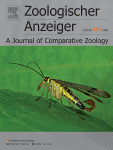l_raty
laurent raty
Han et al 2010 [pdf here] used cyt-b (the GU58xxxx sequences in the tree I attached above), plus c-myc and growth hormone sequences, and they still did not end up with these two species being directly inter-related.Thanks Laurent. It looks like the interpretation of the relationships between macrurus and manillensis is consistent with their respective cyt-b sequences.
However, given the geographical distribution of these 2 species, the similarity of their calls and of their plumage, it seems more likely (to me at least) that this particular derived relationship is misleading. I think we should expect that if other genes are included a more probably affinity will be revealed.
(Albeit, as neither species is part of a well-supported subclade within their Old-World clade, their results arguably do not really exclude the possibility that they might be sister either...)
But then White et al 2016 [link to pdf here above] added arg-1 sequences, and they recovered manillensis in a much more basal position in the OW clade than macrurus, with very strong support.
Last edited:








